The Waste Land
July 11 - August 16, 2019
Andrés Bedoya, Bea Fremderman, Saskia Krafft, Yeni Mao, James Miller, Marianne Vitale, Celeste Wilson
Curated by Mika Harding
-
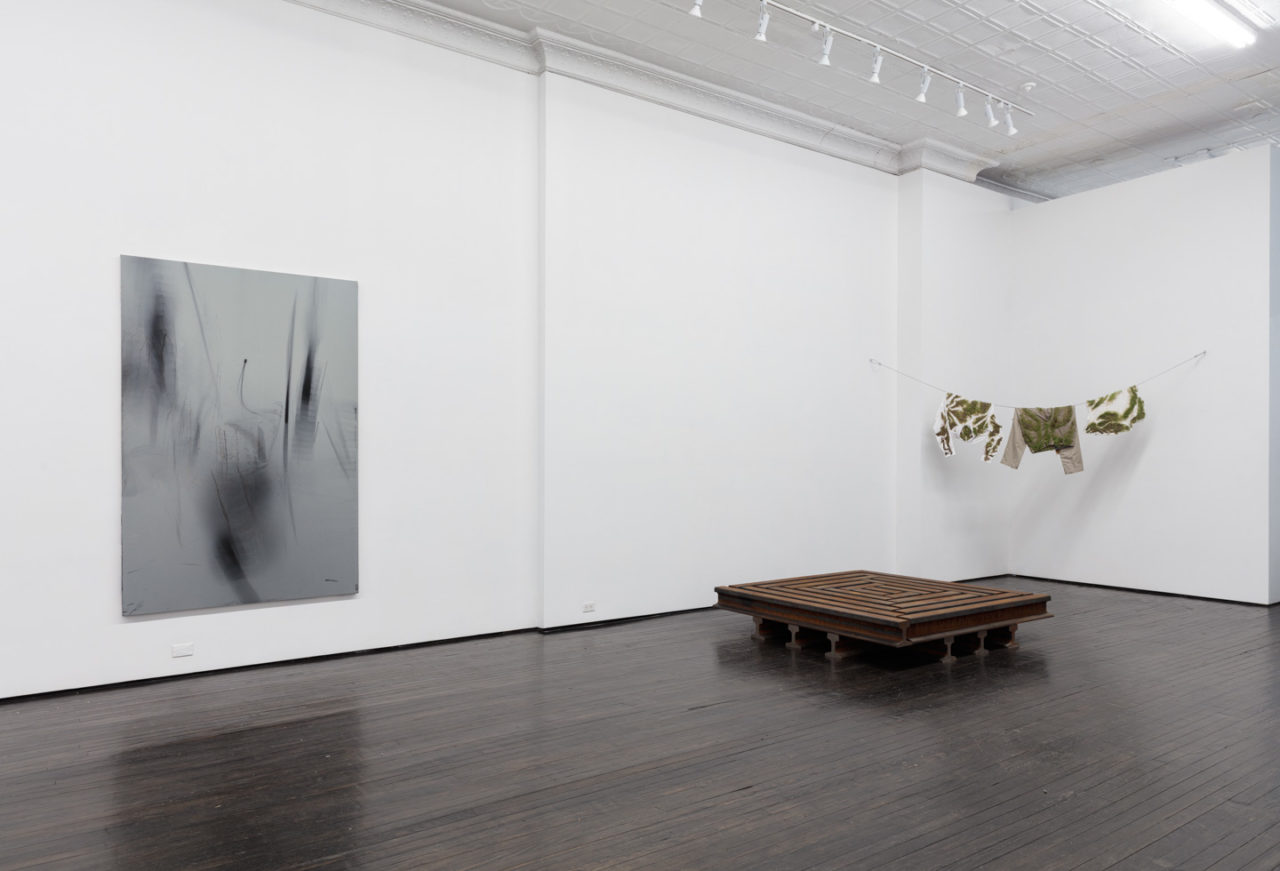
Installation view, The Waste Land, 2019
-
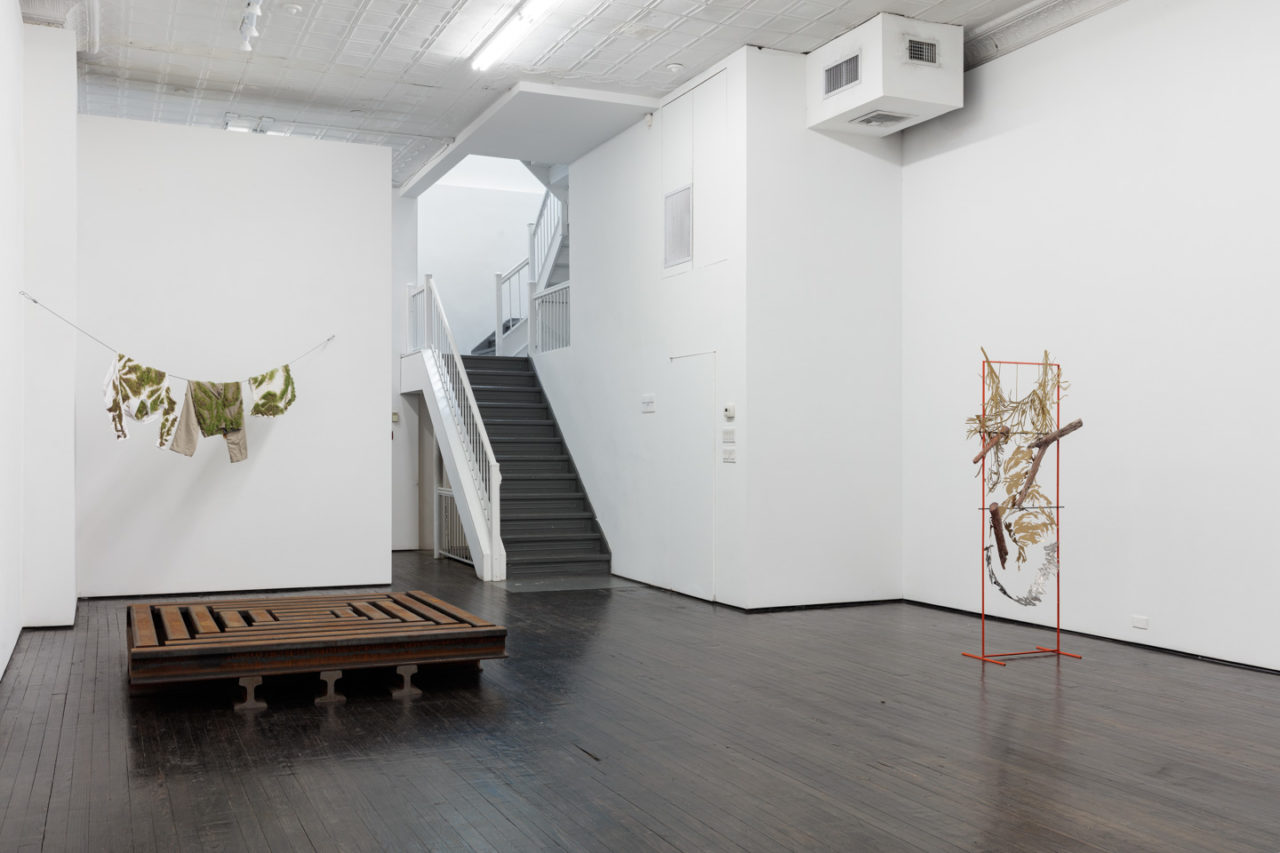
Installation view, The Waste Land, 2019
-
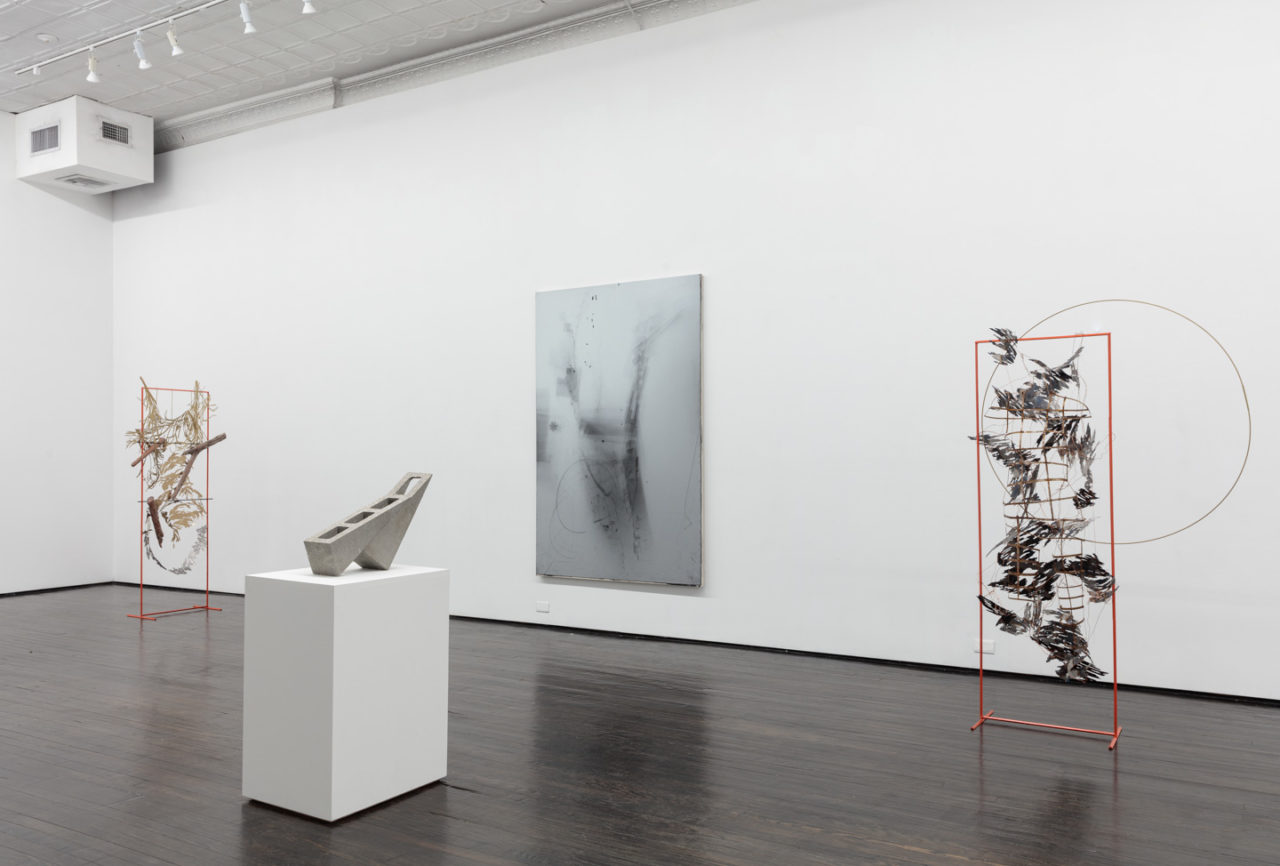
Installation view, The Waste Land, 2019
-
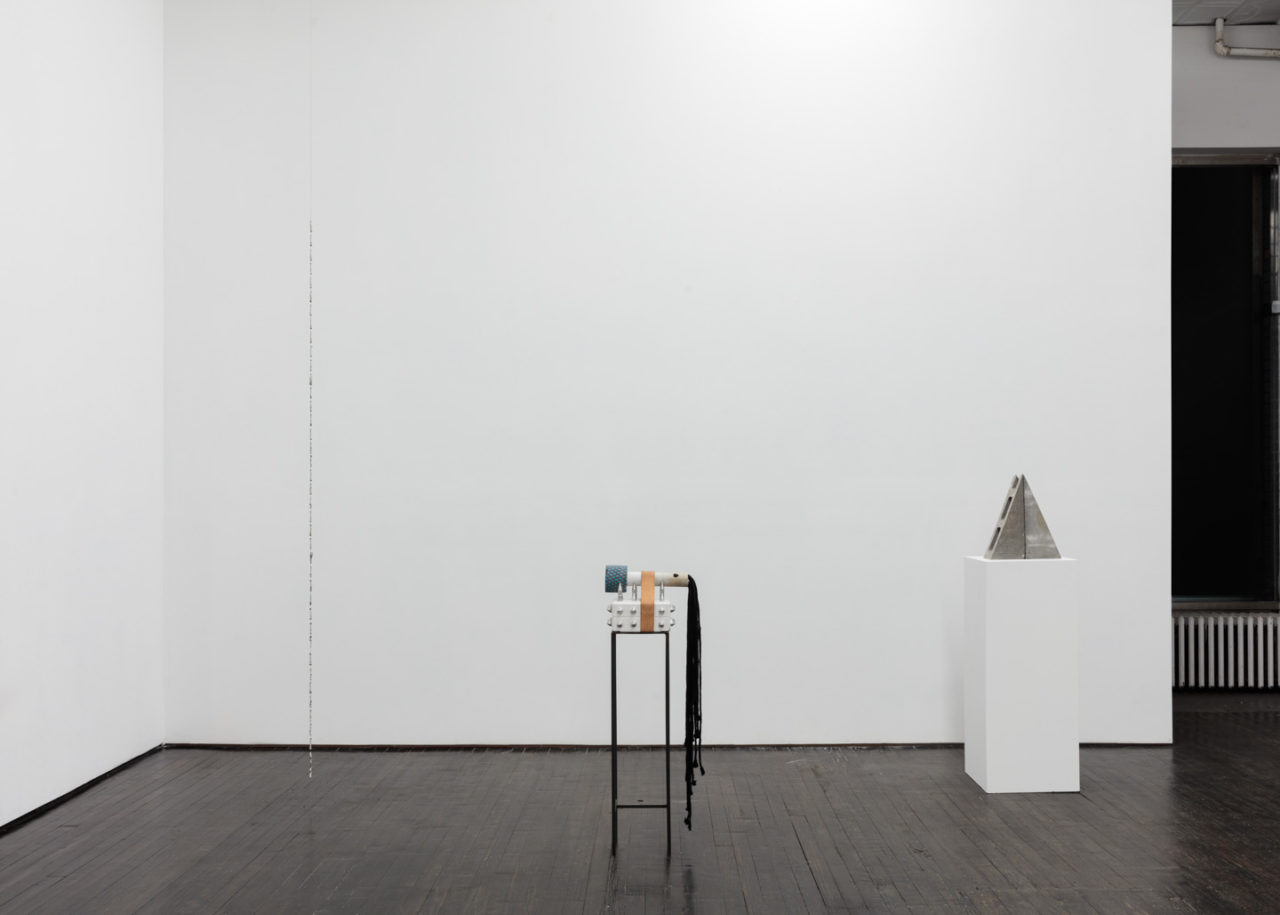
Installation view, The Waste Land, 2019
-
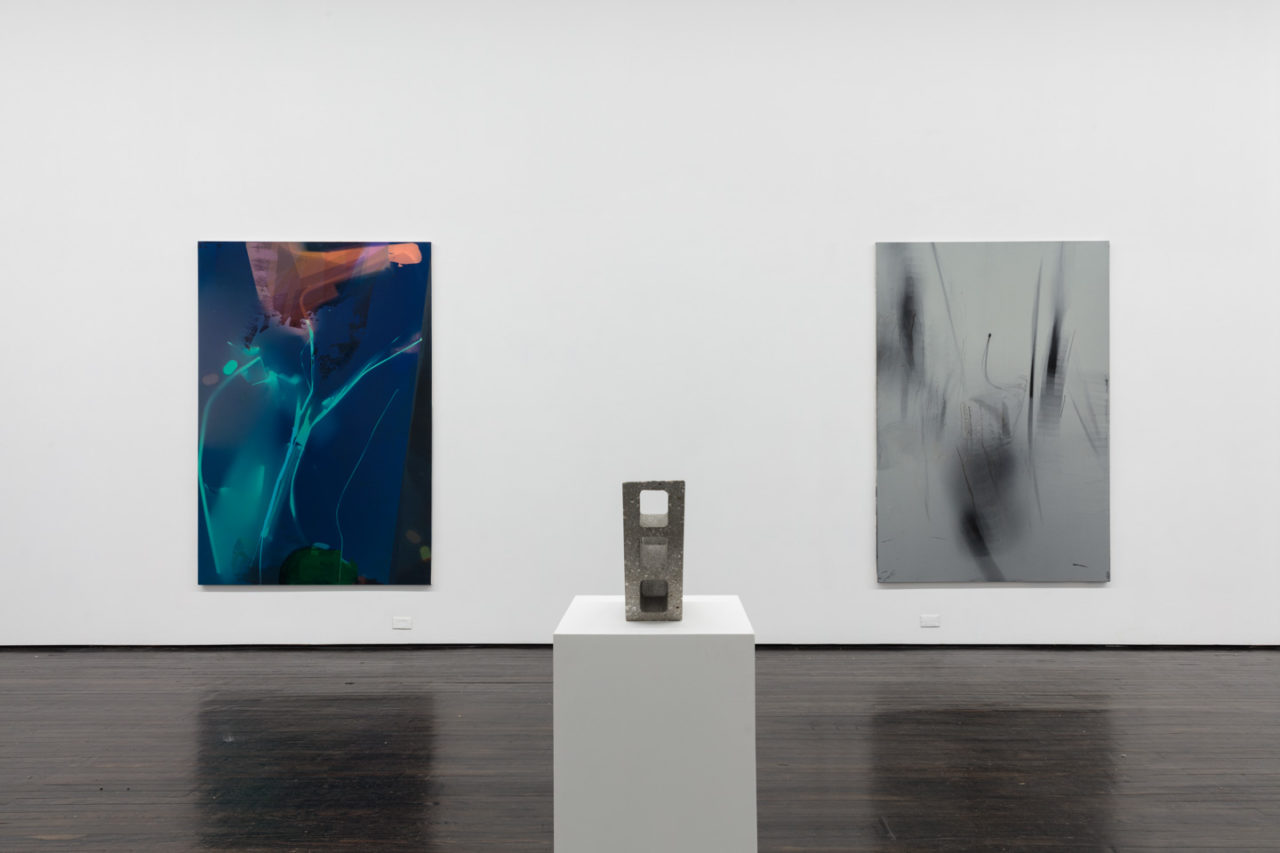
Installation view, The Waste Land, 2019
-
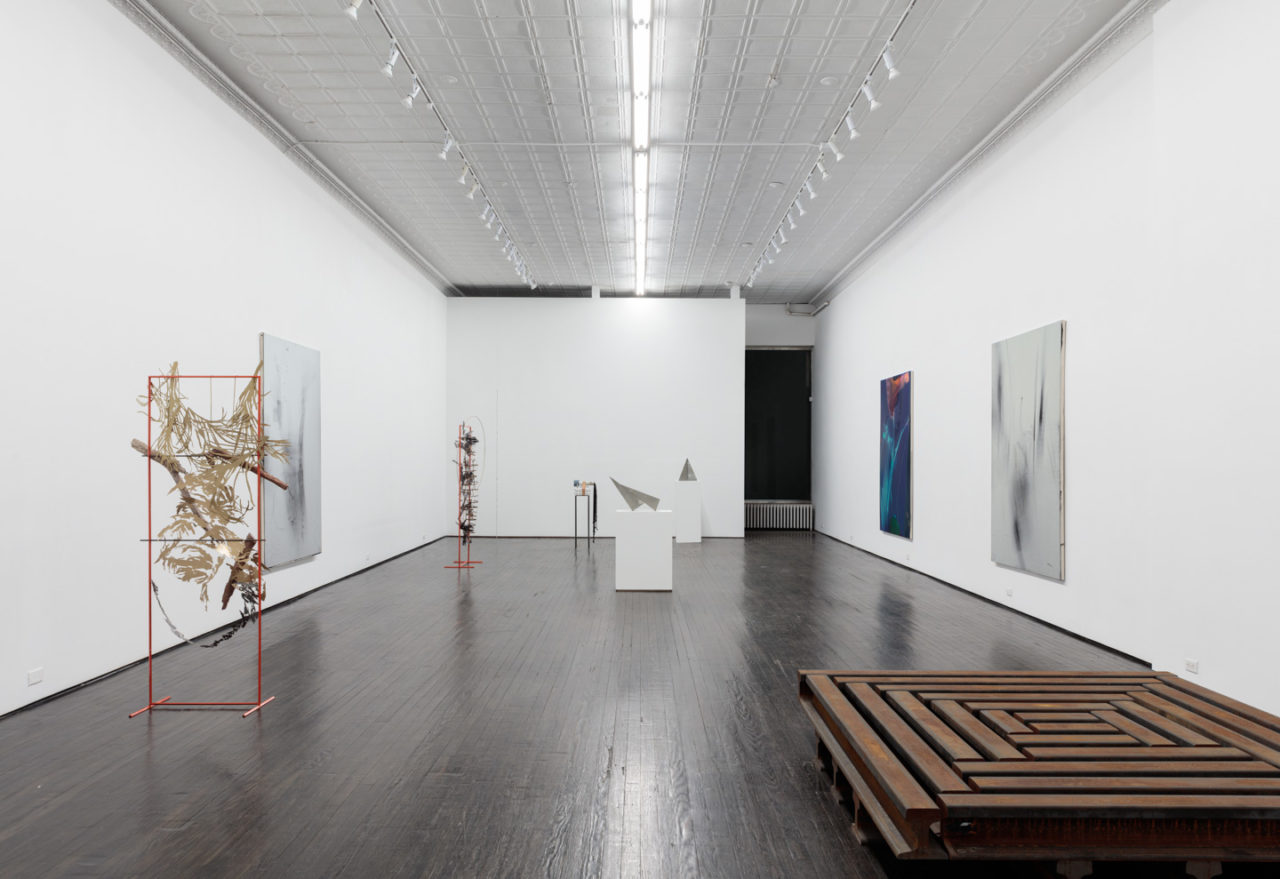
Installation view, The Waste Land, 2019
-
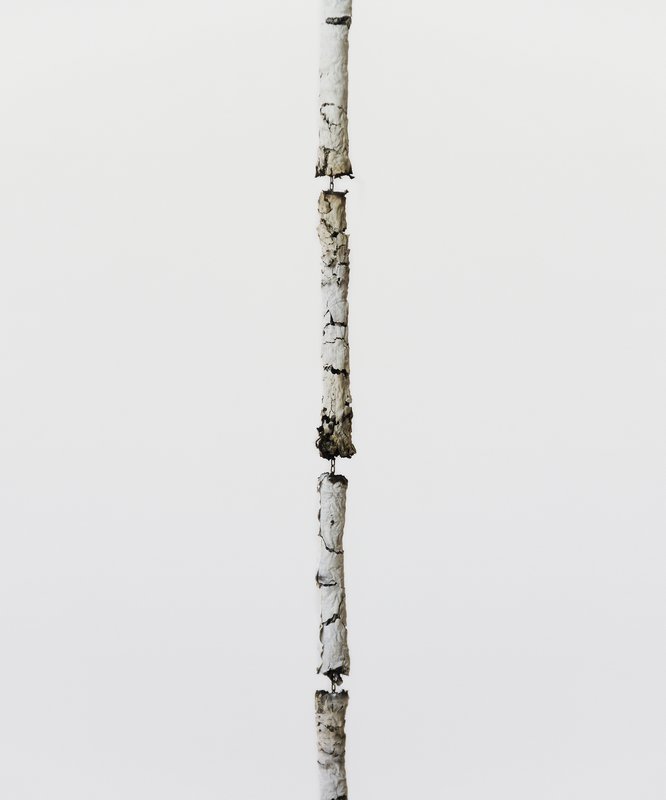
Andrés Bedoya
Patricia (cigarette ash), 2018
Cigarette ash, chain
Dimensions vary (from ceiling to floor) -
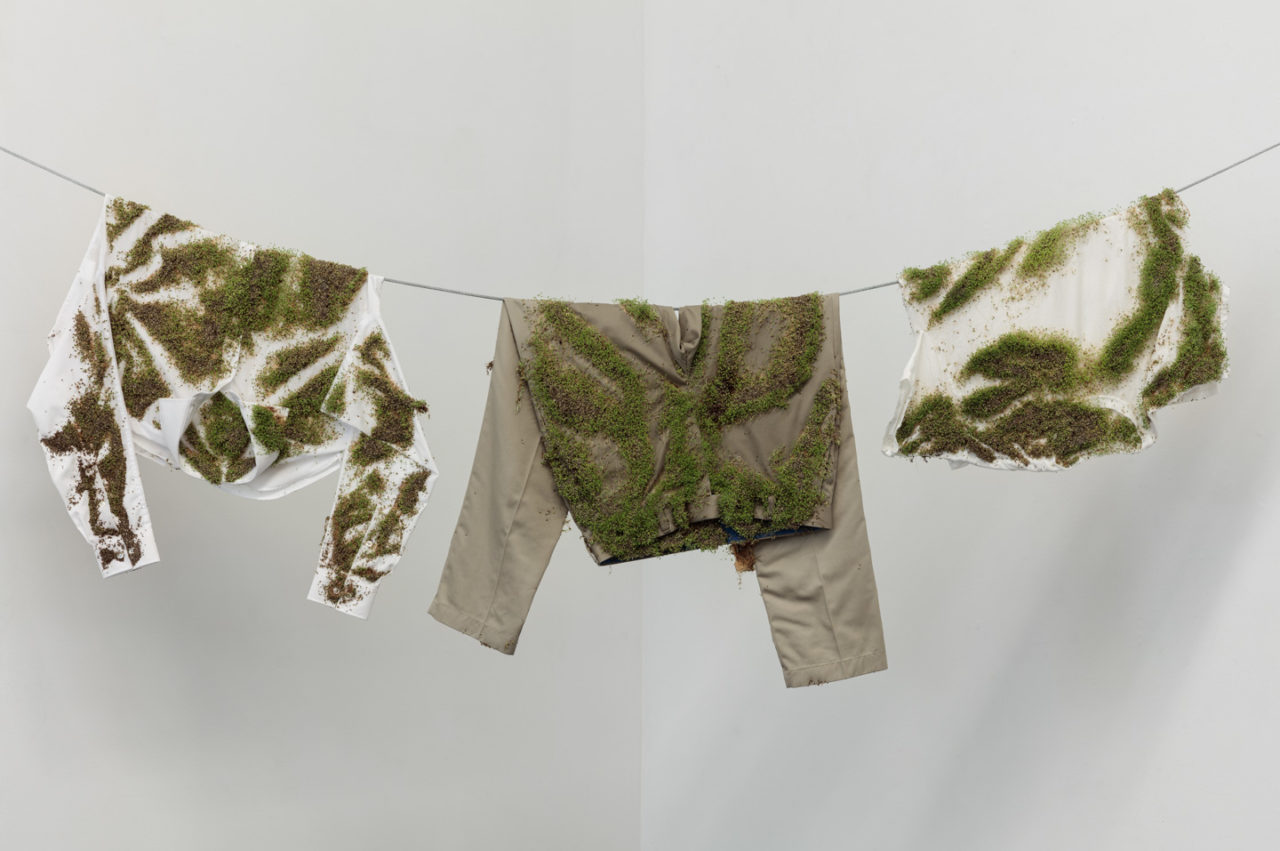
Bea Fremderman
Untitled, 2019
Sprouts on clothing
Dimensions variable -
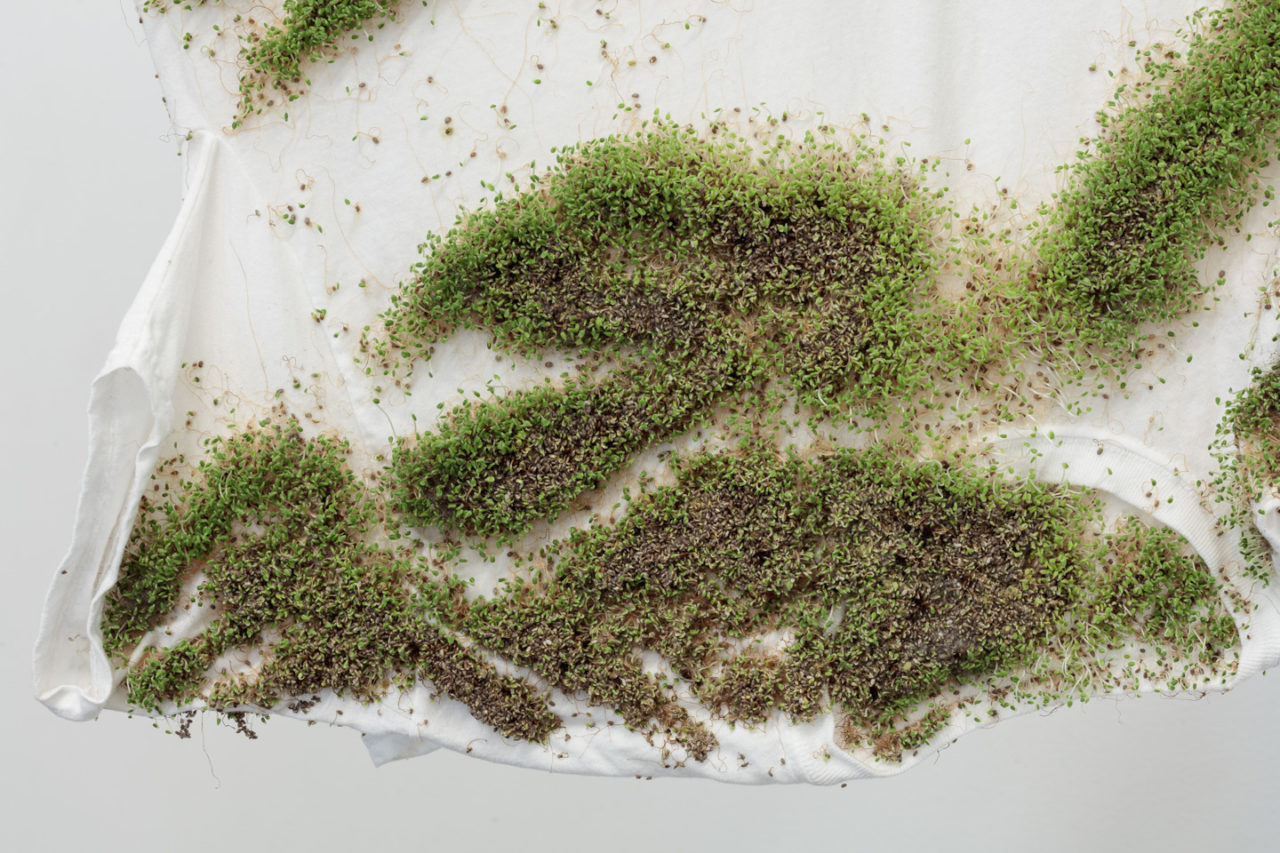
Bea Fremderman
Detail, Untitled, 2019
Sprouts on clothing
Dimensions variable -
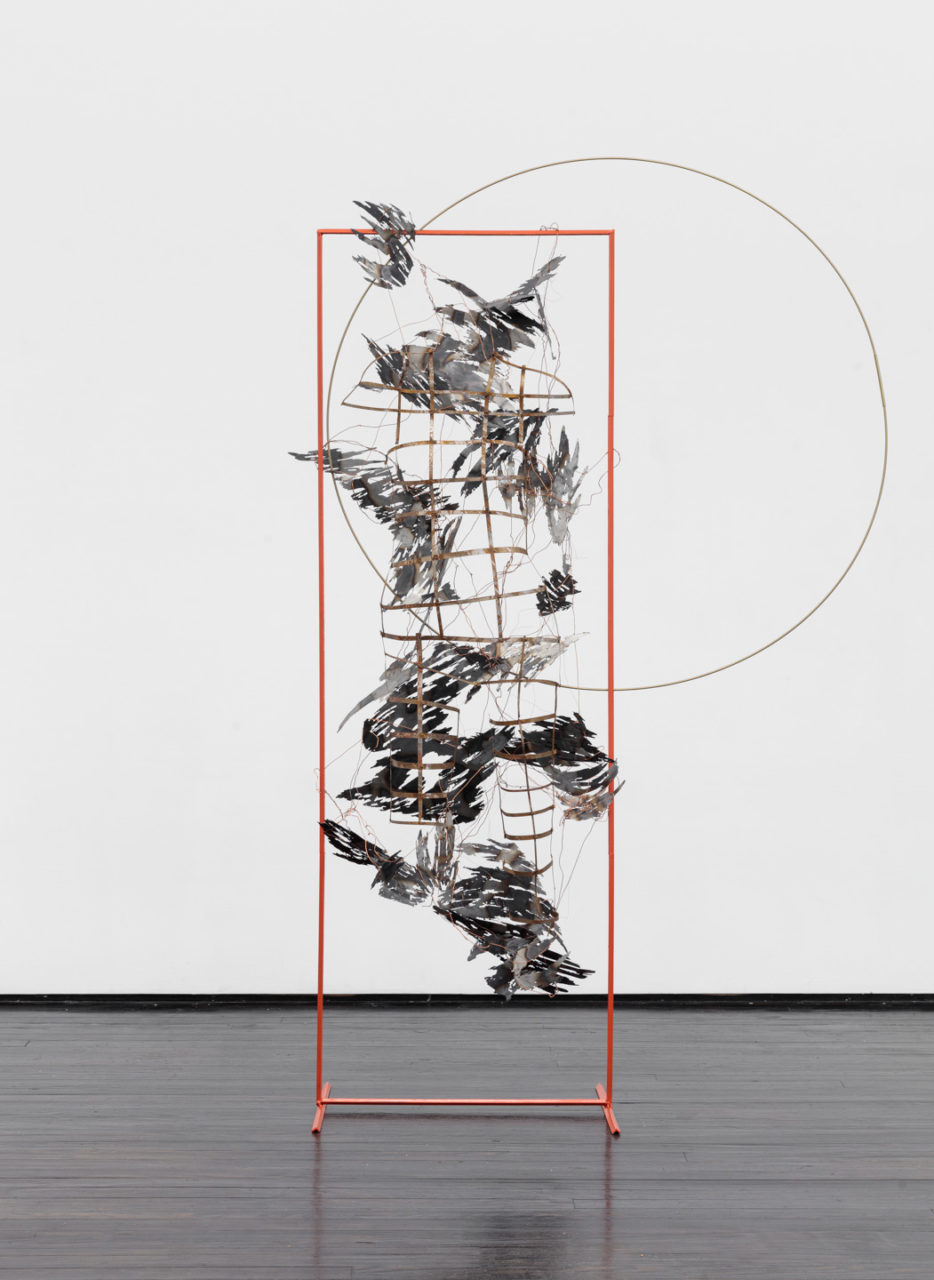
Saskia Krafft
Your Shadow At Evening, 2019
Steel, copper, brass, and enamel
75 1/2 x 33 x 15 inches -
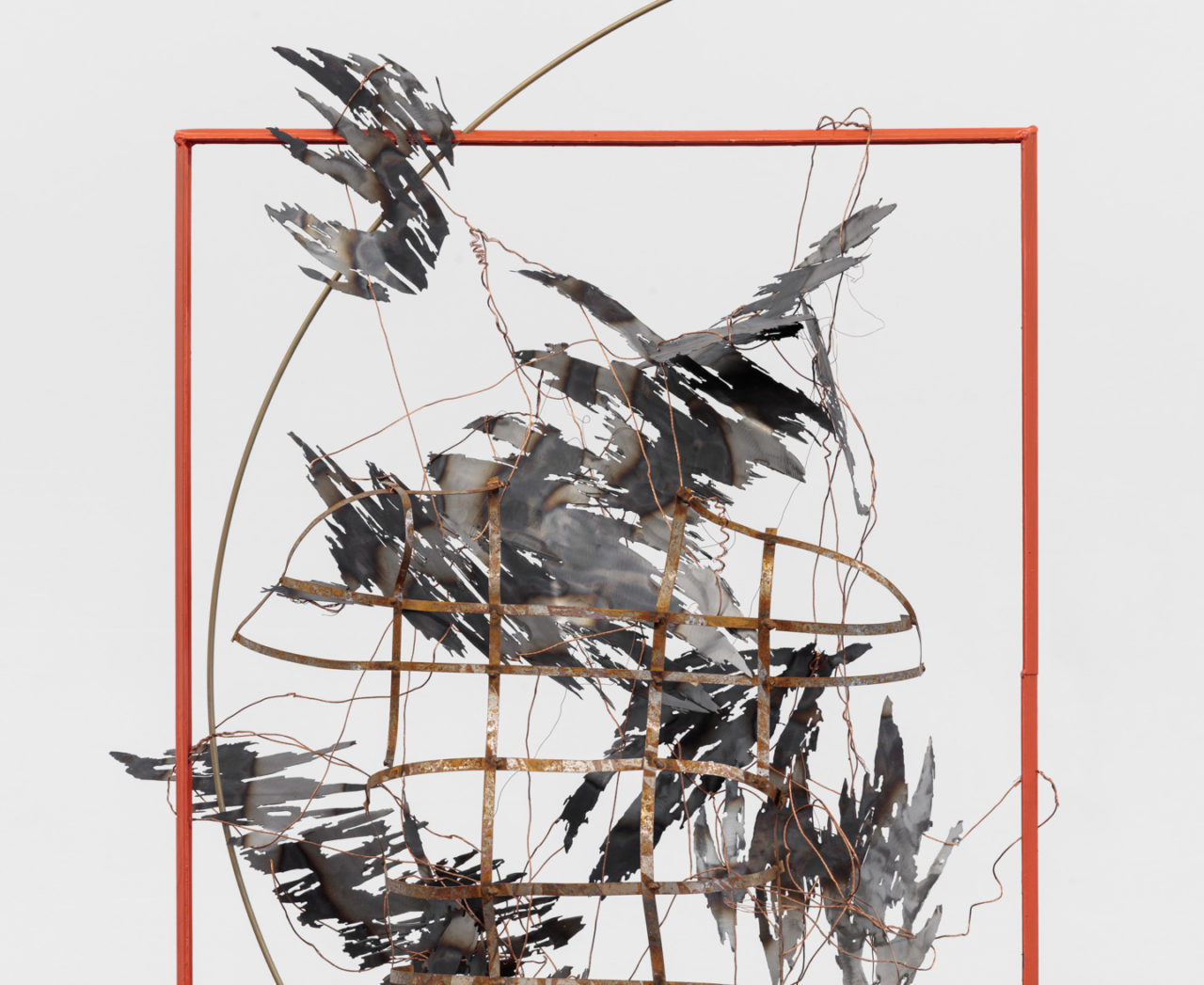
Saskia Krafft
Detail, Your Shadow At Evening, 2019
Steel, copper, brass, and enamel
75 1/2 x 33 x 15 inches -
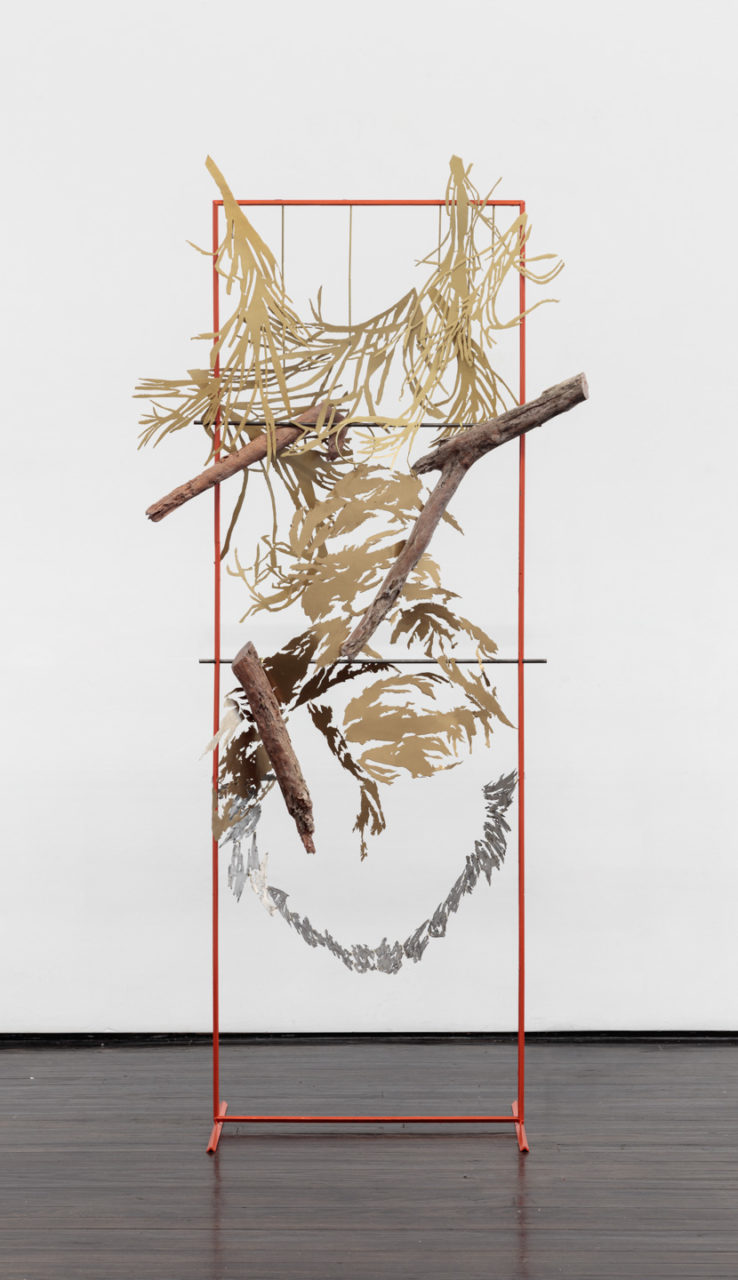
Saskia Krafft
And The Dead Tree Gives No Shelter, 2019
Steel, brass, plastic, pigment, and enamel
74 x 43 x 15 inches -
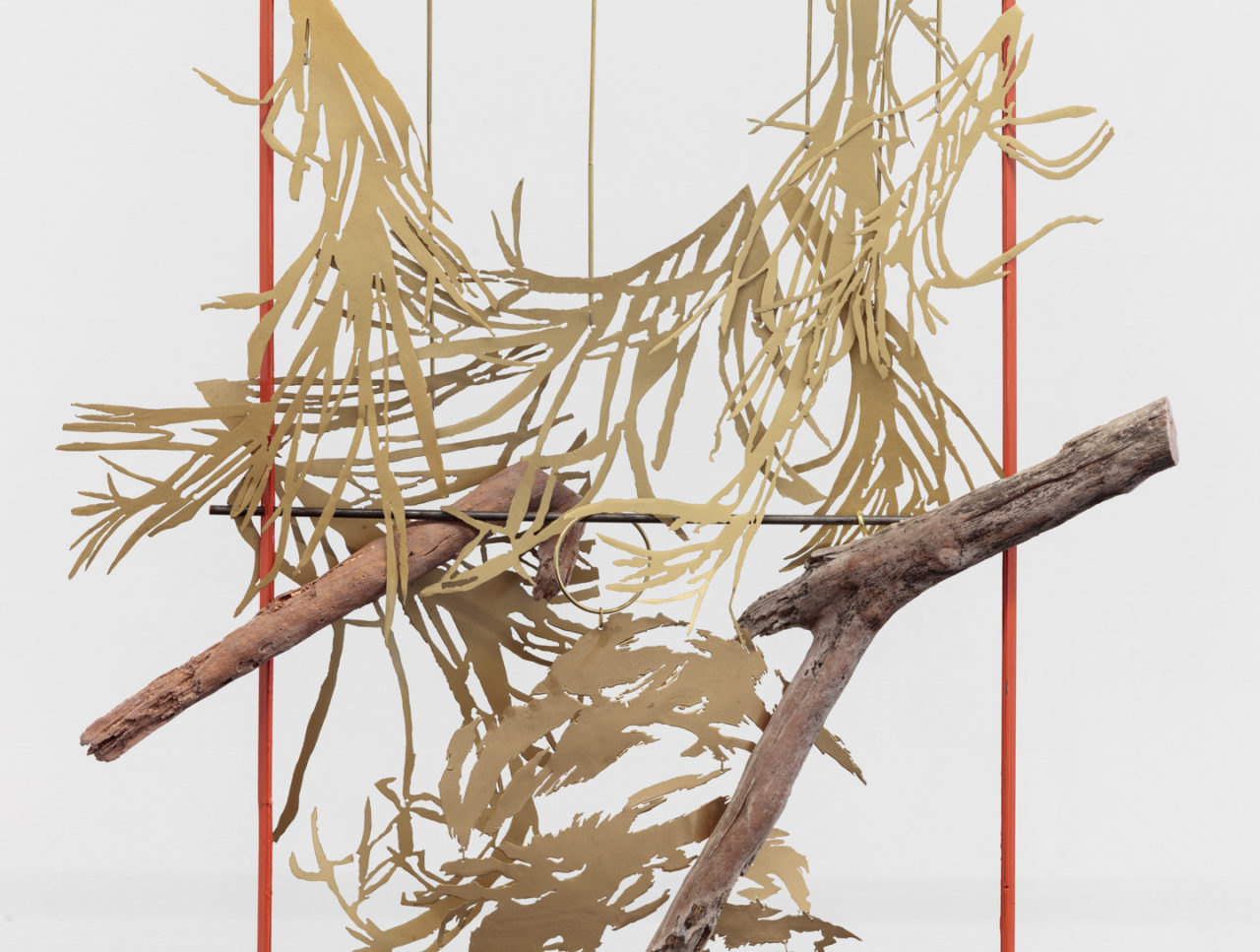
Saskia Krafft
Detail, And The Dead Tree Gives No Shelter, 2019
Steel, brass, plastic, pigment, and enamel
74 x 43 x 15 inches -
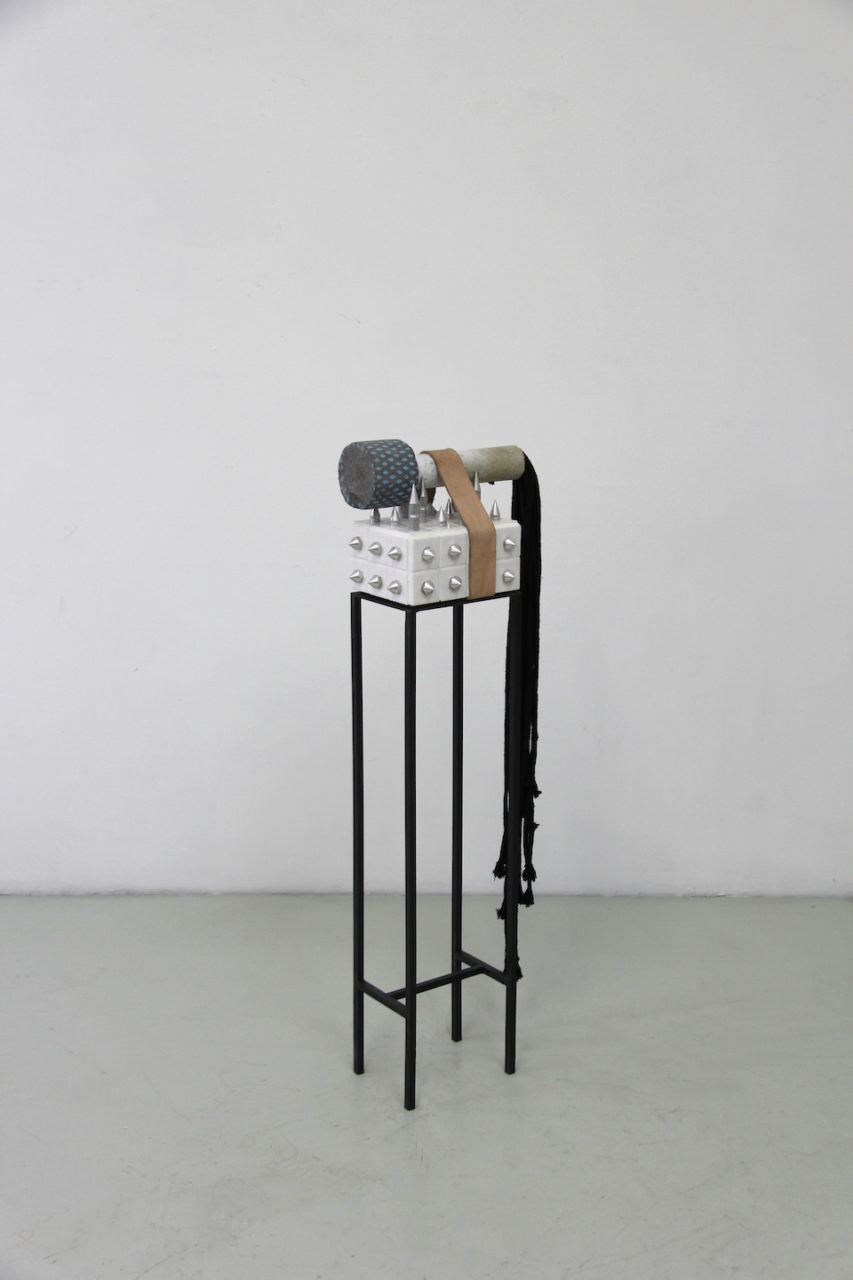
Yeni Mao
Fig. 18.3 console, knurled, 2018
Steel, ceramic tile, aluminum, cement, leather, cotton cord, acrylic enamel
41 x 13 x 8 inches -
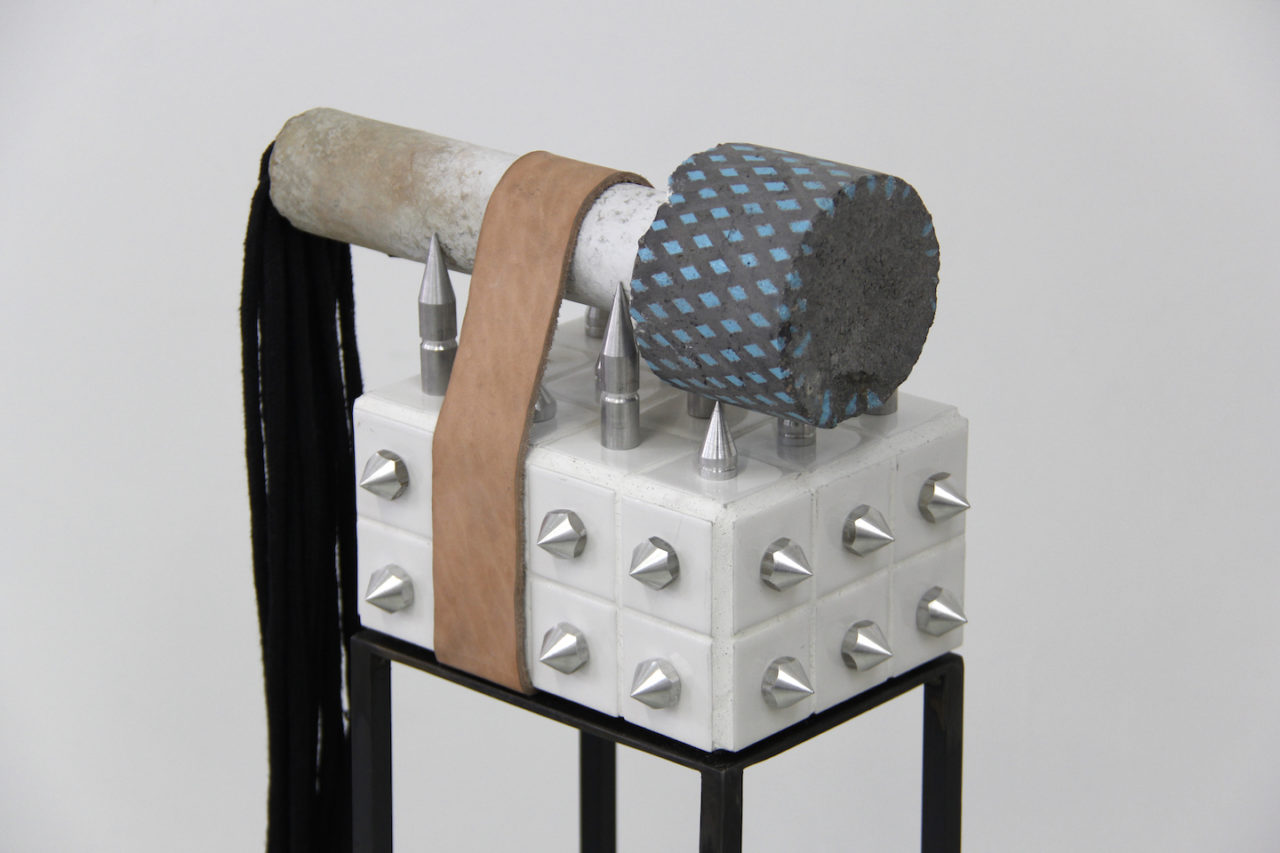
Yeni Mao
Detail, Fig. 18.3 console, knurled, 2018
Steel, ceramic tile, aluminum, cement, leather, cotton cord, acrylic enamel
41 x 13 x 8 inches -
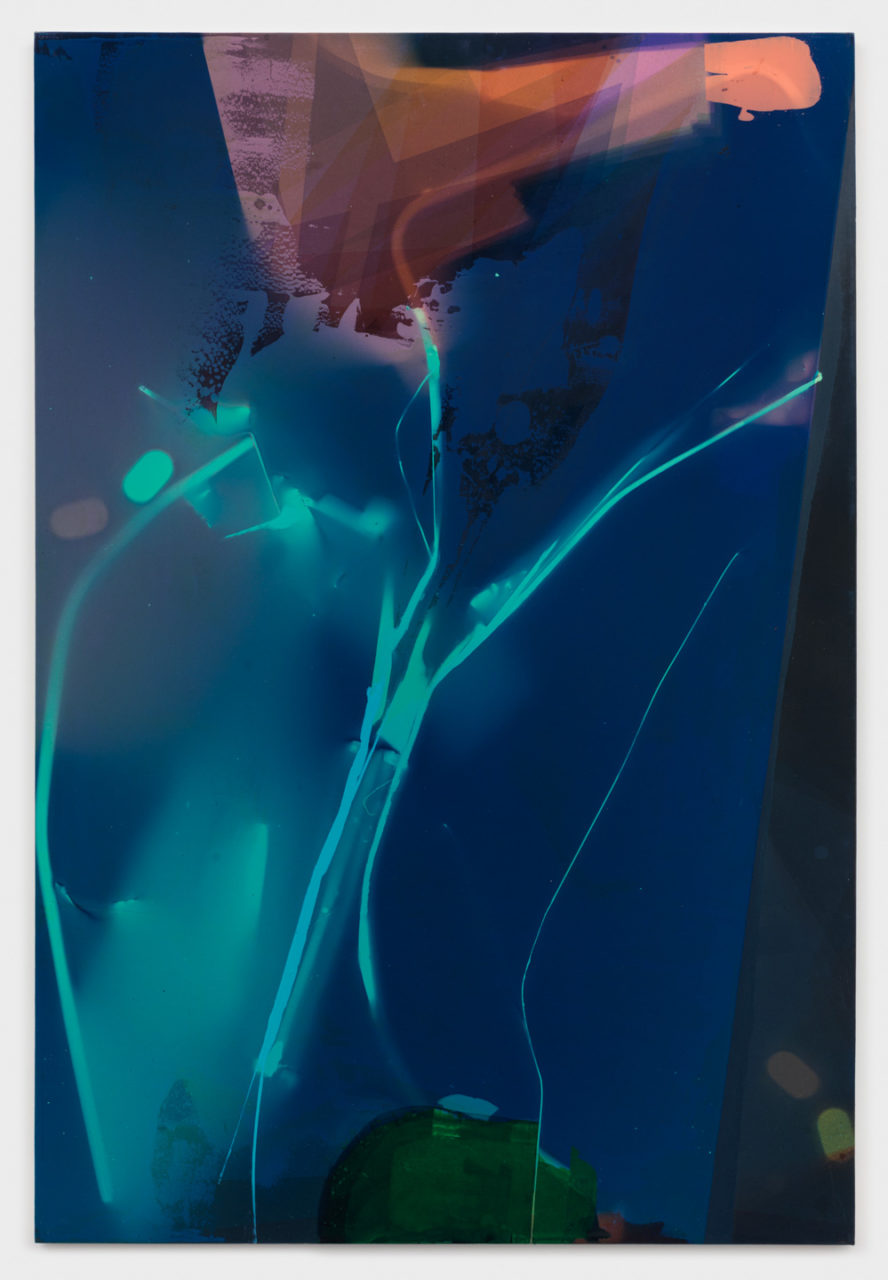
James Miller
tank (4RR), 2019
Acrylic on canvas
81 x 55 inches -
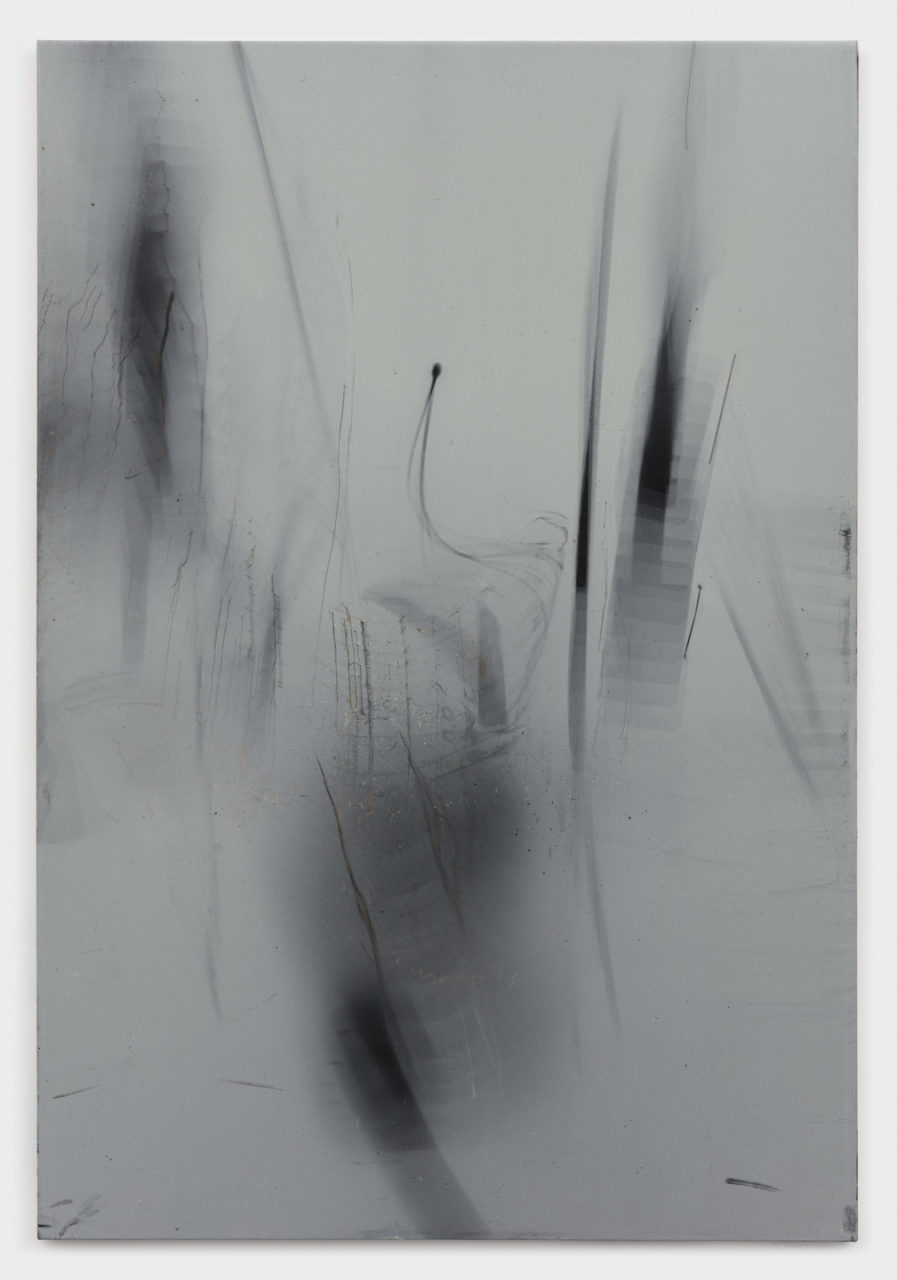
James Miller
FRIEDRICH, 2019
Acrylic on canvas
81 x 55 inches -
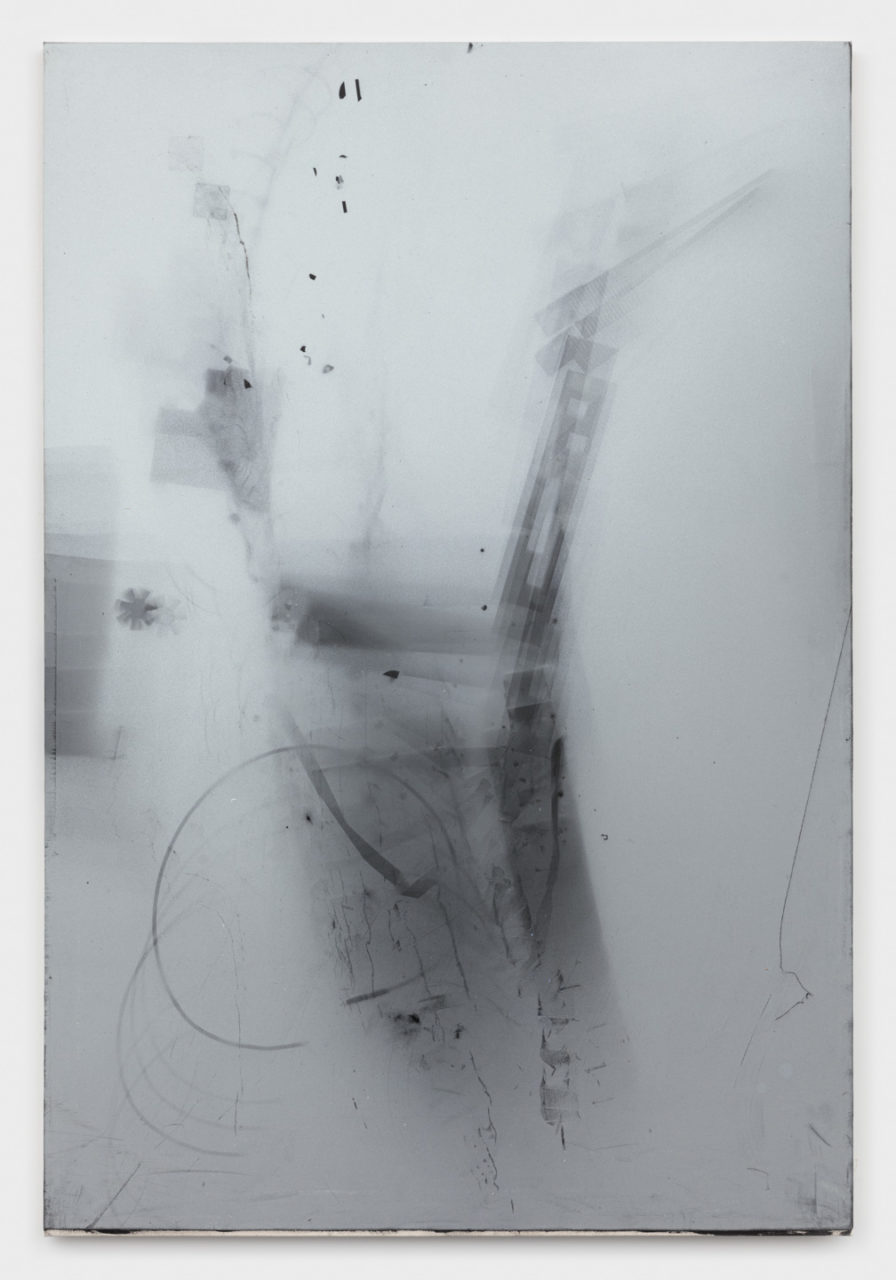
James Miller
>Pet<, 2017
Acrylic on canvas
81 x 55 inches -
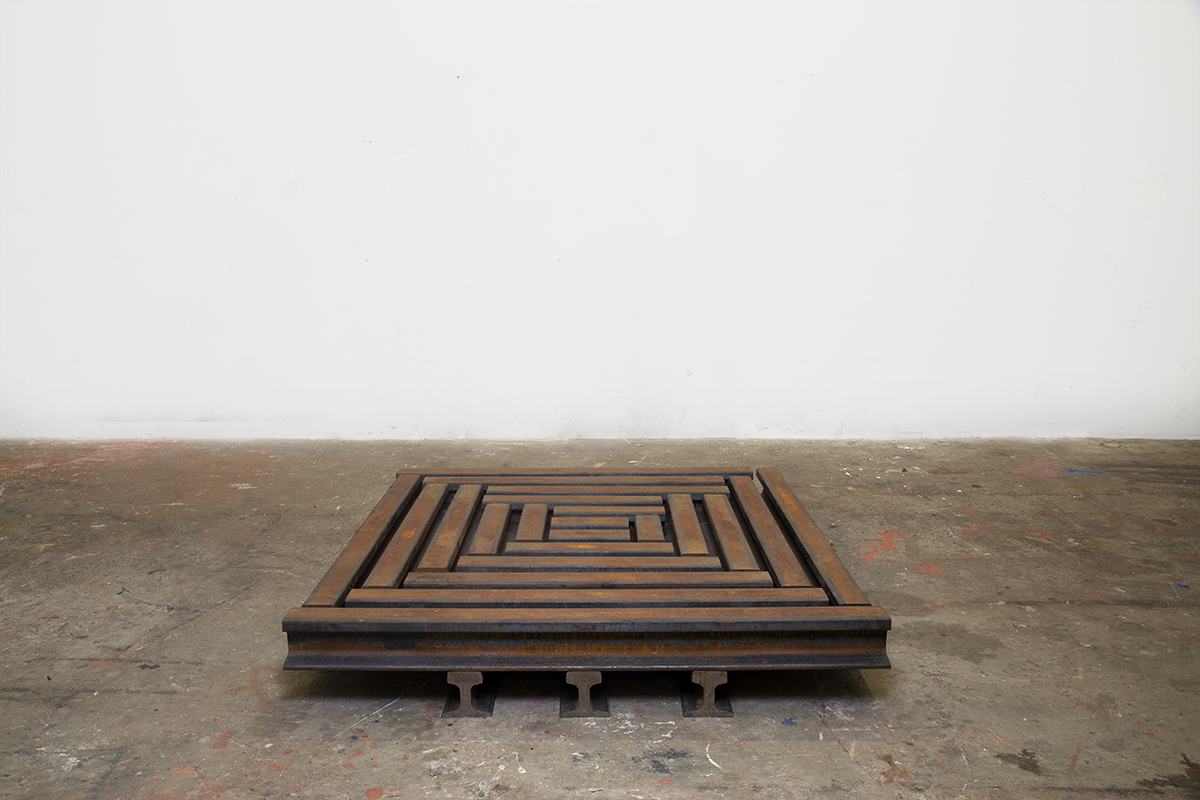
Marianne Vitale
Crane Rail, 2016
Steel
12 x 72 x 72 inches -
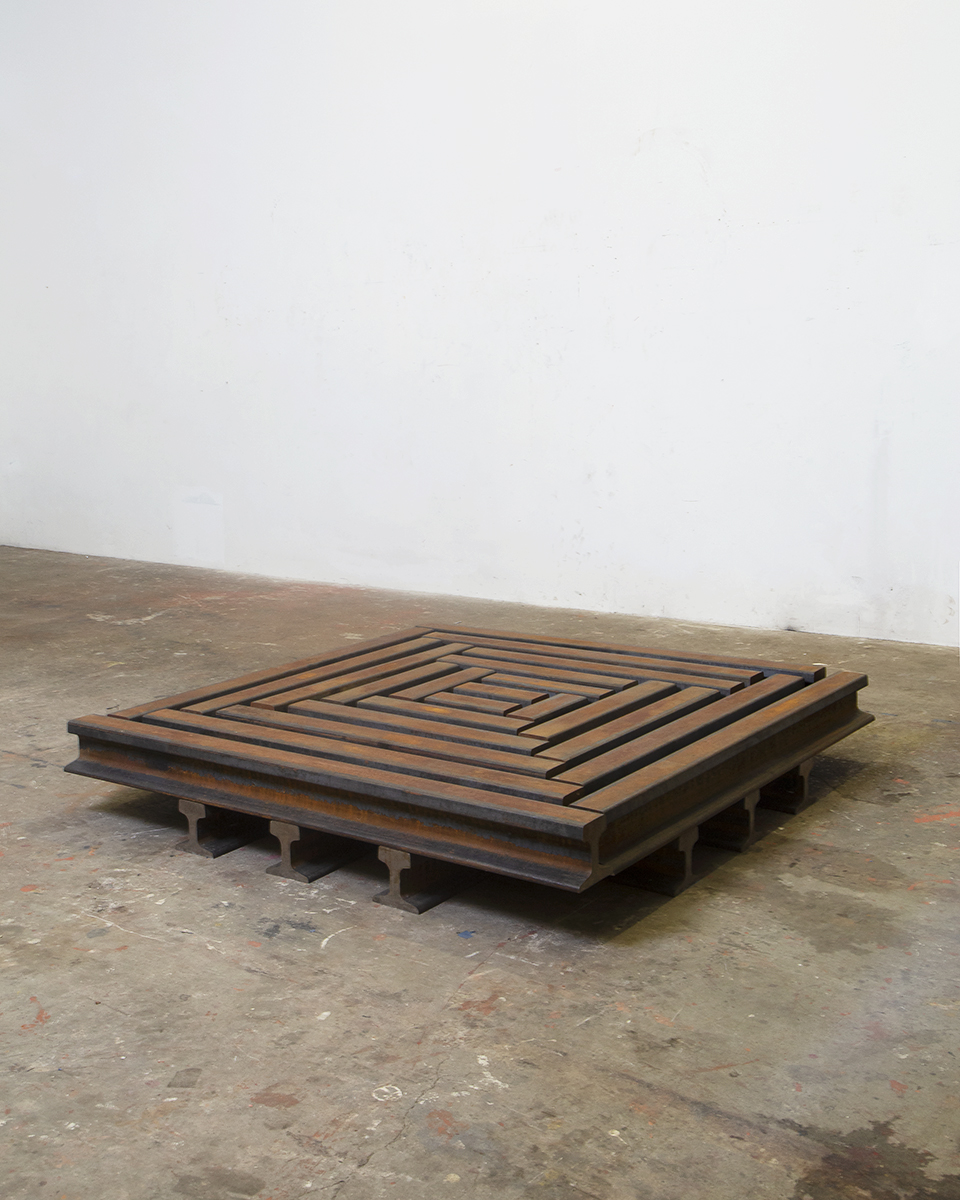
Marianne Vitale
Alternate view, Crane Rail, 2016
Steel
12 x 72 x 72 inches -
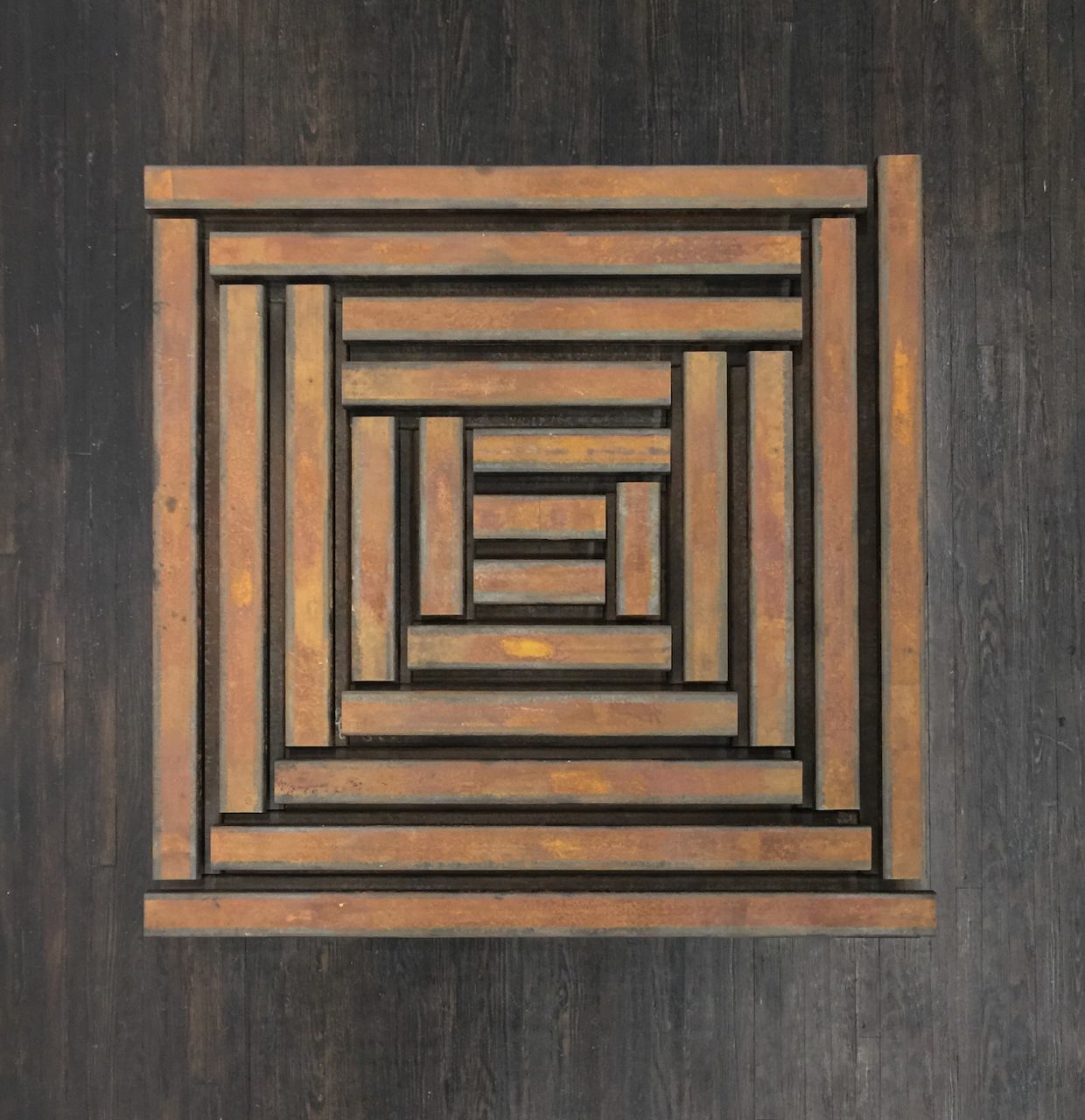
Marianne Vitale
Alternate view, Crane Rail, 2016
Steel
12 x 72 x 72 inches -
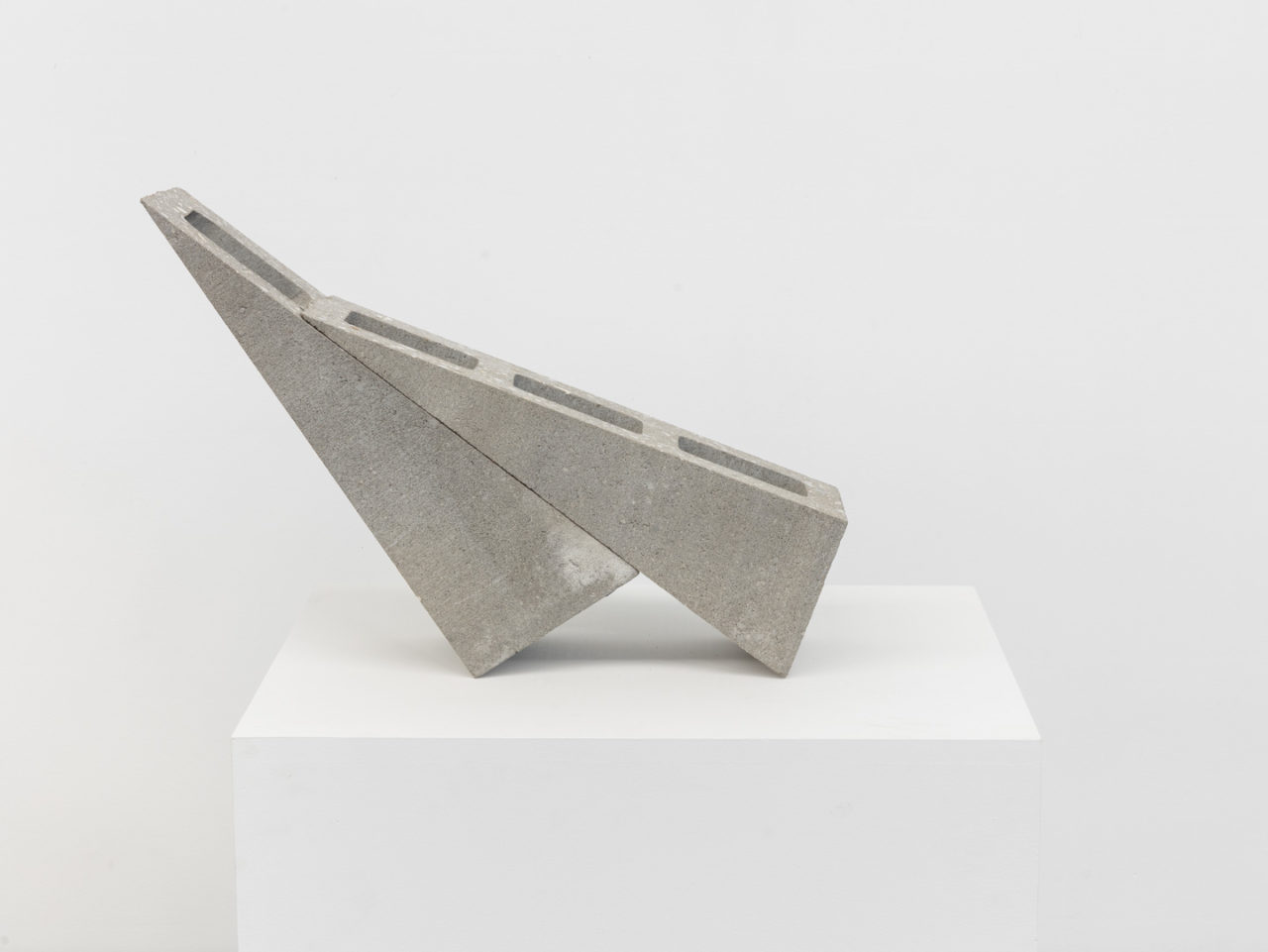
Celeste Wilson
Lean, 2018
Concrete
20 x 26 x 6 inches -
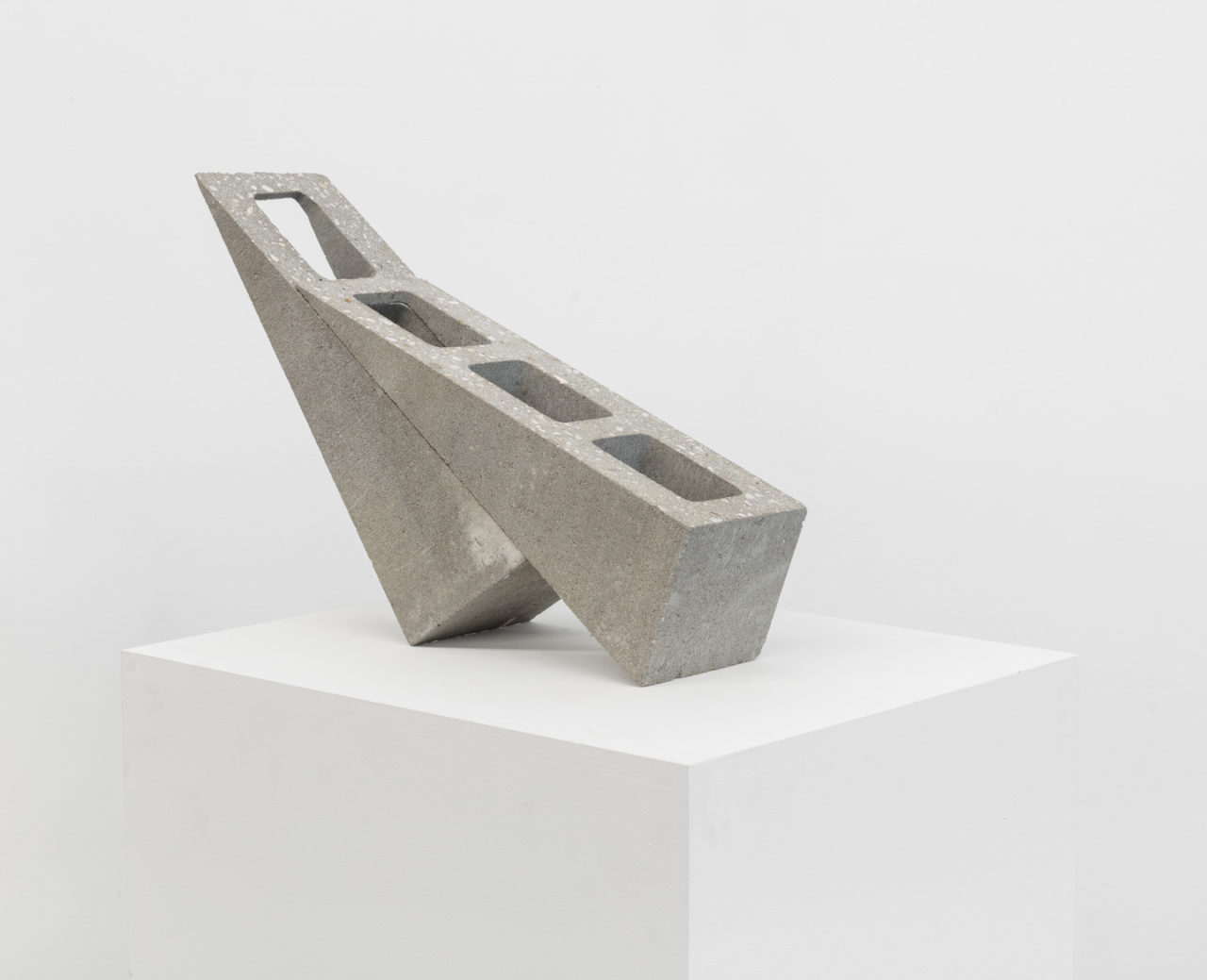
Celeste Wilson
Alternate view, Lean, 2018
Concrete
20 x 26 x 6 inches -
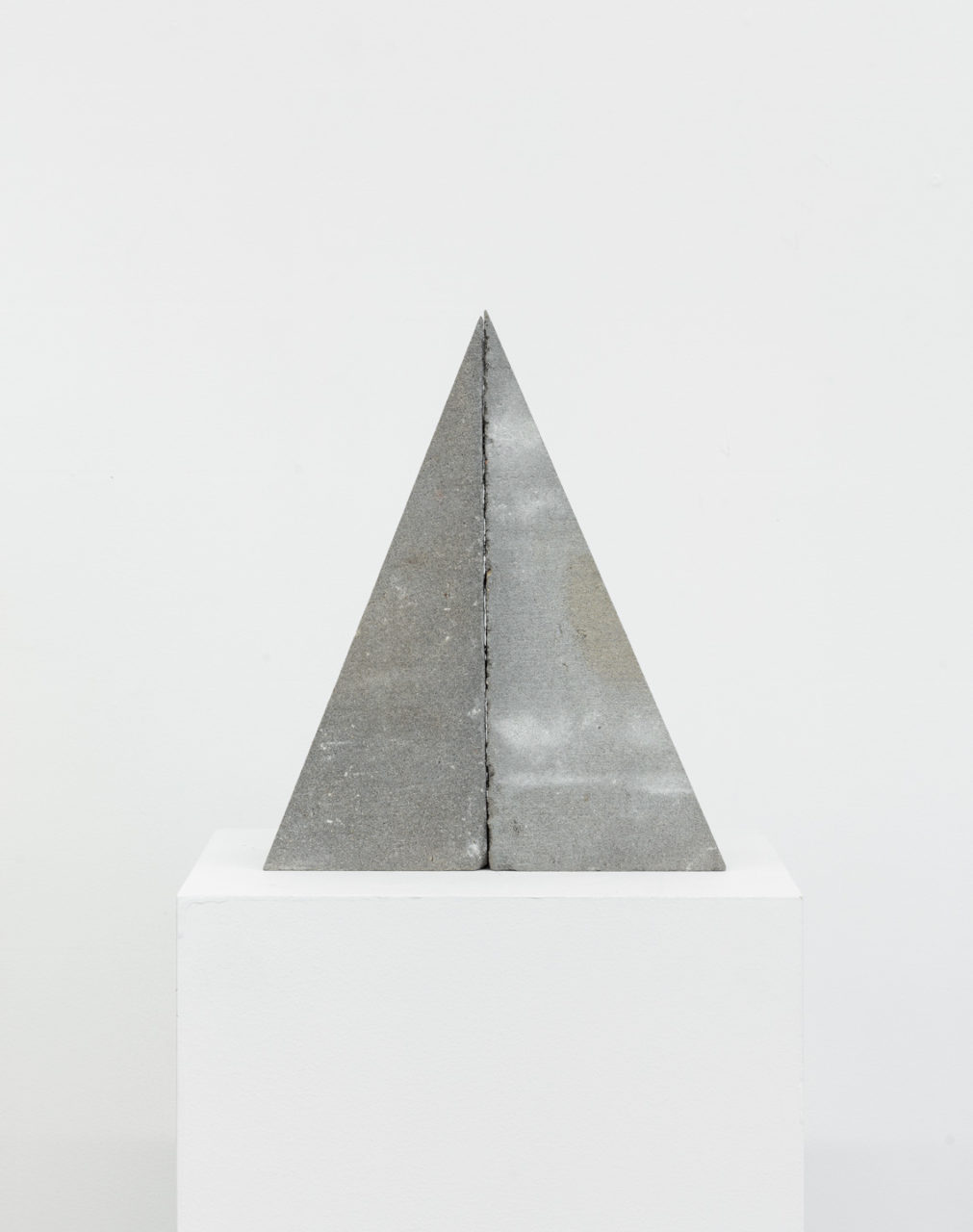
Celeste Wilson
Press, 2018
Concrete
11 x 14 x 6 inches -
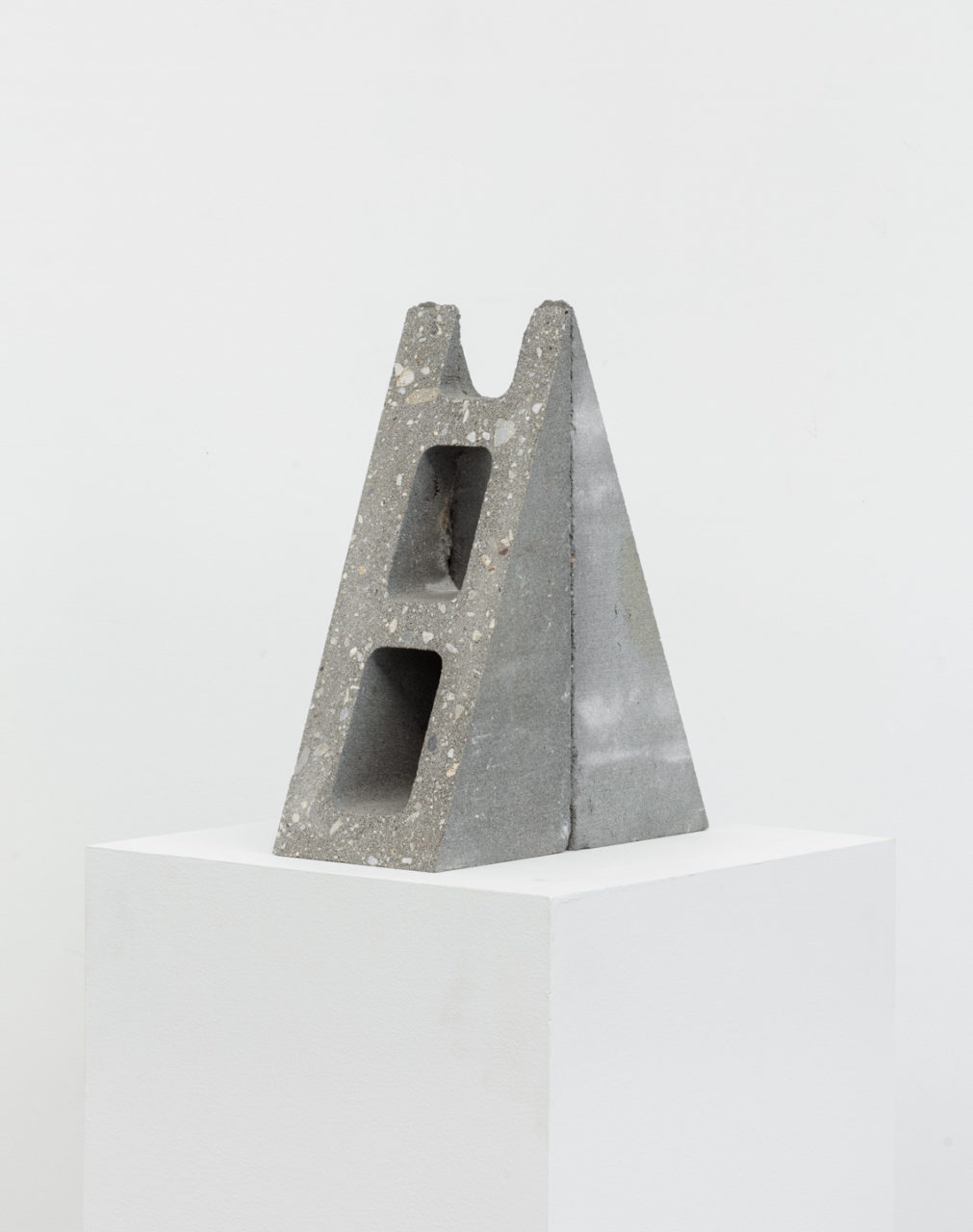
Celeste Wilson
Alternate view, Press, 2018
Concrete
11 x 14 x 6 inches
Press Release
Opening reception: Thursday, July 11, 6-8pm
What are the roots that clutch, what branches grow
Out of this stony rubbish? Son of man,
You cannot say, or guess, for you know only
A heap of broken images, where the sun beats,
And the dead tree gives no shelter, the cricket no relief,
And the dry stone no sound of water. Only
There is shadow under this red rock,
(Come in under the shadow of this red rock),
And I will show you something different from either
Your shadow at morning striding behind you
Or your shadow at evening rising to meet you;
I will show you fear in a handful of dust.
(T.S. Eliot, The Waste Land, lines 19-30)
Nicelle Beauchene is pleased to present The Waste Land, a group exhibition including the works of Andrés Bedoya, Bea Fremderman, Saskia Krafft, Yeni Mao, James Miller, Marianne Vitale, and Celeste Wilson. The exhibition takes its name from the poem by T.S. Eliot. He published The Waste Land shortly after the end of World War I—empire was in decline, millions of soldiers and civilians were dead from the War, the populace was fractured by violence and disillusioned by rapidly shifting cultural and political landscapes. The poem’s second stanza focuses on the ecological effects of war, portraying a world where only shadows and dust are left behind.
The artists included in the exhibition utilize a variety of media to transform industrial or utilitarian materials. The works are homages to the organic or contain traces of a past life. Andrés Bedoya’s work, created with unfiltered cigarettes and a metal chain, is installed and set on fire in situ. Patricia (cigarette ash) is a reference to the temporal as well as acting as an offering, a practice common in La Paz where he lives. James Miller similarly captures the ephemeral in his large scale paintings. He creates light and shadow, the effects of movement, and depth using acrylic paint on canvas.
Bea Fremderman offers a glimpse into a post apocalyptic world, where a clothesline (a casual sight of domesticity) has become overgrown and is beginning to fade back into the landscape. While Fremderman alludes to a prior human presence, it is Saskia Krafft’s steel, brass, and copper sculptures that include the sole figure in the exhibition. The metal sarcophagus is an empty vessel, a headless witness. Yeni Mao’s sculpture, Fig. 18.3 console, knurled, presents a weapon as a fetish object. Using concrete, acrylic enamel, and ceramic tile, the work becomes a futuristic reliquary. Celeste Wilson also uses concrete to create intimately scaled monuments, which serve as totems or navigational markers. The largest work in the exhibition, Marianne Vitale’s Crane Rail is constructed out of rusted steel railroad ties. The work is an empty plinth, a subverted mode of transportation, or a red rock. A reimagining of Eliot’s “heap of broken images,” The Waste Land considers the anxieties of a barren world.
For further information, please contact mika@nicellebeauchene.com